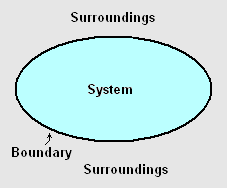Thermodynamic Properties
A thermodynamic property elucidates considerable characteristics of a substance. The knowledge of these properties is necessary to the understanding of the thermodynamics. The quantity which is either a feature of a whole system or is a function of place that is constant and does not differ rapidly over microscopic distances, apart from possibly for unexpected changes at boundaries among phases of the system; illustrations are pressure, temperature, volume, surface tension, concentration, and viscosity. This is also termed as macroscopic property.

In order to bring through a program of finding the modifications in the different thermodynamic functions which accompany reactions-like enthalpy, entropy, and free energy-it is frequently helpful to know such quantities separately for each of the materials entering into the reaction. For illustration, when the entropies are known independently for the reactants and products, then the entropy alter for the reaction is merely the difference
ΔSreaction = Sproducts - Sreactants
and likewise for the other thermodynamic functions. Moreover, when the entropy change for a reaction is known beneath one set of cases of temperature and pressure, it can be found beneath other sets of cases by involving the variation of entropy for the reactants and products with temperature or pressure as portion of the overall procedure. For such reasons, scientists and engineers have build up extensive tables of thermodynamic properties for many general substances, altogether with their rates of change with state variables like temperature and pressure.
The science of thermodynamics gives a rich range of formulas and methods which permit the maximum possible quantity of information to be extracted from a limited number of laboratory measurements of the properties of materials. Though, as the thermodynamic express of a system based on numerous variables-like temperature, pressure, and volume-in practice it is essential first to decide how many of these are self-governing and then to identify what variables are permitted to change whereas others are held constant. For this cause, the mathematical language of partial differential equations is crucial to the further explanation of the subject of thermodynamics.
Obviously critical significance in the application of thermodynamics is the quantities of work needed to make substances expand or contract and the quantity of heat needed to change the temperature of substances. The initial is determined by the equation of state of the substance and the second by its heat capacity. Once such physical properties have been fully exemplified, they can be used to compute other thermodynamic properties, like the free energy of the substance under different conditions of temperature and pressure.